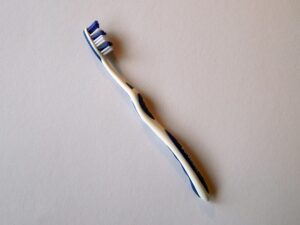There are some common misconceptions about how long it takes for drugs to show up on a drug test. Many people believe that the moment you use a drug, that it will test positive. However, there is some lag time involved, so if the test is taken too soon after recent use, it may read as a negative test. Detection times vary widely and depend on multiple factors. Let’s take a look at detection windows for common drug test specimens and how long they typically take to become detectable.

Factors Influencing Drug Detection Times
Several factors impact how long a drug remains detectable in the body:
- Type of Drug: Different substances metabolize at varying rates.
- Frequency and Duration of Use: Chronic use can lead to drug accumulation, extending detection periods.
- Dosage: Higher doses take longer to eliminate.
- Metabolic Rate: Individuals with faster metabolisms process drugs more quickly.
- Age, Body Mass, and Overall Health: These factors influence how long drugs remain in the system.
- Urine pH and Concentration: Can affect the detection window in urine drug tests.
The route of administration (e.g., smoking vs. injection) and hydration levels may also influence drug clearance times.
Detection Windows by Biological Specimen
1. Urine Testing
Urine tests are the most commonly used drug testing method because they are non-invasive and have relatively extended detection windows.
- Detection Window (varies by substance):
- Marijuana (THC): 1-7 days
- Cocaine: 2-3 days
- Heroin (Opiates): 1-3 days
- Amphetamines: 2-3 days
- Phencyclidine (PCP): 7-14 days
- Benzodiazepines: 2-7 days
- Advantages: Longer detection periods than blood or saliva testing; easy to administer.
- Limitations: Samples can be adulterated or diluted to evade detection.
(Source: FDA, 2023¹; SAMHSA, 2023²)
2. Blood Testing
Blood tests detect the presence of drugs in the bloodstream, providing real-time information on recent drug use.
- Detection Window:
- Marijuana (THC): 1-3 hours
- Cocaine: 2-6 hours
- Heroin (Opiates): 2-6 hours
- Amphetamines: 4-6 hours
- PCP: 4-6 hours
- Advantages: Provides the most accurate information on impairment.
- Limitations: Short detection window; invasive collection method.
(Source: FDA, 2023¹; Mayo Clinic, 2023⁴)
3. Saliva Testing
Saliva tests detect drugs in oral fluids, typically reflecting recent drug use.
- Detection Window:
- Detects most drugs within a few hours to 2 days after use.
- Advantages: Non-invasive; useful for detecting recent drug use.
- Limitations: Short detection window; oral contamination may affect results.
(Source: Drugs.com, 2023⁵)
4. Hair Testing
Hair follicle testing detects drug use over long periods.
- Detection Window:
- Drugs can be detected for up to 90 days, depending on hair length.
- Advantages: Long detection window; ideal for detecting chronic drug use.
- Limitations: Cannot detect recent drug use (less than a week old); external contamination possible.
(Source: NIDA, 2023³; University of Rochester, 2023⁶)
Detection Times for Specific Substances
1. Marijuana (THC)
- Urine: 1-7 days
- Blood: 1-3 hours
- Saliva: Up to 24 hours
- Hair: Up to 90 days
(Source: FDA, 2023¹; SAMHSA, 2023²)
2. Cocaine
- Urine: 2-3 days
- Blood: 2-6 hours
- Saliva: Up to 2 days
- Hair: Up to 90 days
(Source: FDA, 2023¹; Mayo Clinic, 2023⁴)
3. Heroin (Opiates)
- Urine: 1-3 days
- Blood: 2-6 hours
- Saliva: Up to 2 days
- Hair: Up to 90 days
(Source: FDA, 2023¹; NIDA, 2023³)
4. Amphetamines
- Urine: 2-3 days
- Blood: 4-6 hours
- Saliva: Up to 2 days
- Hair: Up to 90 days
(Source: FDA, 2023¹; Mayo Clinic, 2023⁴)
5. Phencyclidine (PCP)
- Urine: 7-14 days
- Blood: 4-6 hours
- Saliva: Up to 2 days
- Hair: Up to 90 days
(Source: SAMHSA, 2023²; University of Rochester, 2023⁶)
What Specimen Type Should Employers Use?
Employers perform drug tests for different reasons. The specimen chosen will depend on their testing objectives. An ideal testing program would consist of routine urine testing, in addition to random saliva testing. This will detect those with chronic substance abuse issues as well as those who use on the job. But each employer must do what works best for their mission.
Long Term Use: For routine drug testing and for detecting long term chronic use and addiction, urine and hair testing would be more appropriate. This is due to their much longer window of detection ranging from up to 30 days with urine and up to 90 days with hair samples. The thing with this type of testing is that it won’t specifically detect impairment, since metabolites can remain in the body far after the last use and impairment has ended.
Short Term Use/Current Impairment: If employers are looking for more recent use, like within the past few hours, blood and saliva are the better option because they have much shorter windows of detection, as little as 1-2 hours. This type of testing is more likely to detect someone that has recently used and is impaired, not just someone that tested positive for the metabolite. Fear of employee impairment is the number one reason that employers performs testing in the first place. An impaired employee is a risk to safety for themselves, the company and the public.
Conclusion
For those wanting to know how long it takes for drugs to show up on a drug test, the answer is tied heavily to the choice of specimen used. Urine tests offer longer detection windows, while blood and saliva tests provide real-time detection of recent use. Hair tests, though unable to detect recent drug use, are effective for identifying long-term substance use. The type of specimen used will depend on the intent of the employer.
References
- U.S. Food and Drug Administration (FDA). (2023). Drugs of Abuse Tests. Retrieved from: https://www.fda.gov/medical-devices/drugs-abuse-tests/drugs-abuse-home-use-test
- Substance Abuse and Mental Health Services Administration (SAMHSA). (2023). Clinical Drug Testing in Primary Care. Retrieved from: https://store.samhsa.gov/product/Clinical-Drug-Testing-in-Primary-Care/SMA12-4668
- National Institute on Drug Abuse (NIDA). (2023). Drug Testing. Retrieved from: https://nida.nih.gov/publications/research-reports/drug-testing
- Mayo Clinic Laboratories. (2023). Urine Drug Testing: Detection Times and Cutoff Levels. Retrieved from: https://www.mayocliniclabs.com/test-catalog/Clinical+and+Interpretive/92437
- Drugs.com. (2023). Drug Testing Detection Times. Retrieved from: https://www.drugs.com/article/drug-testing.html
- University of Rochester Medical Center. (2023). Drug Tests – Understanding the Basics. Retrieved from: https://www.urmc.rochester.edu/encyclopedia/content.aspx?ContentTypeID=167&ContentID=drug_testing











